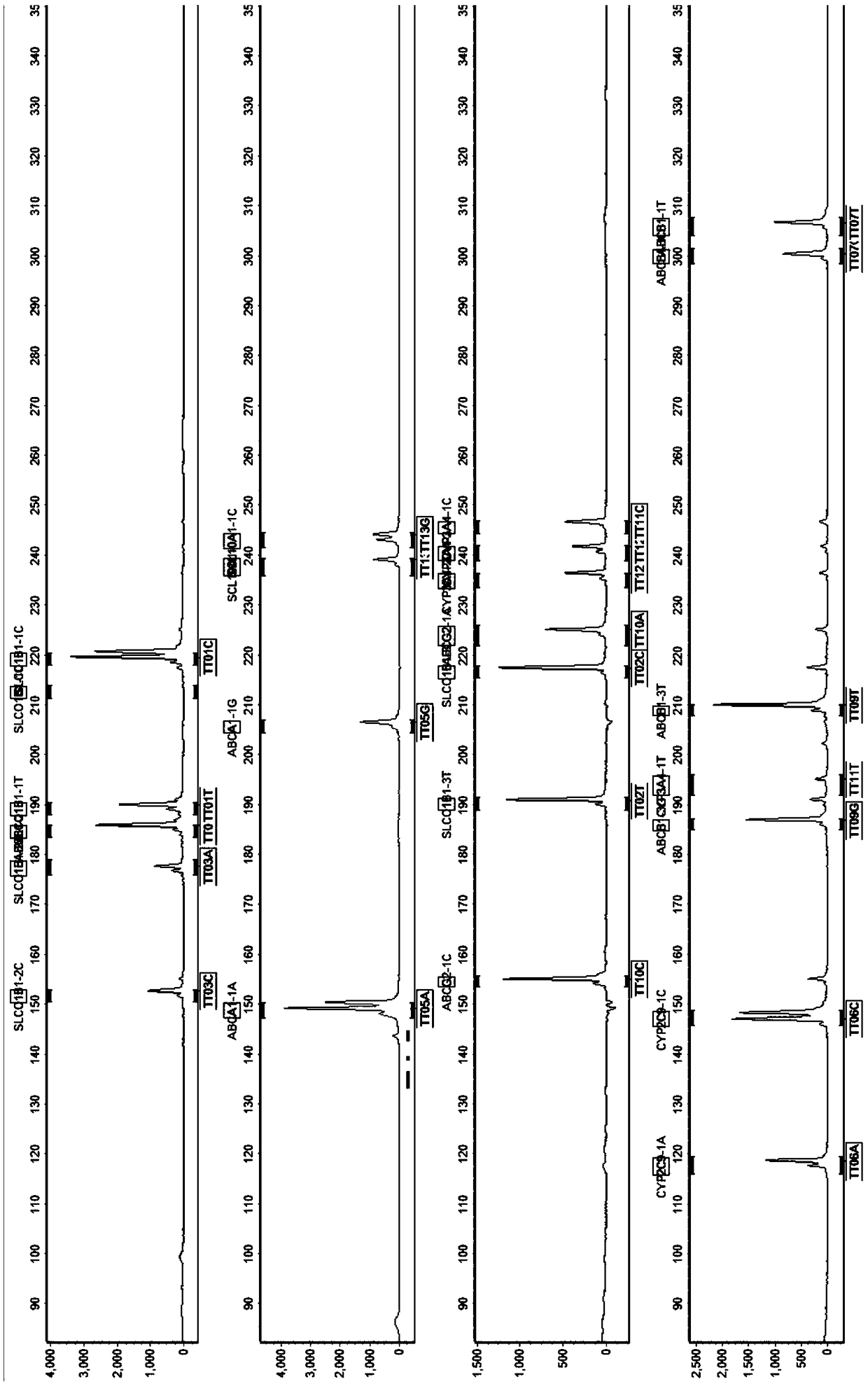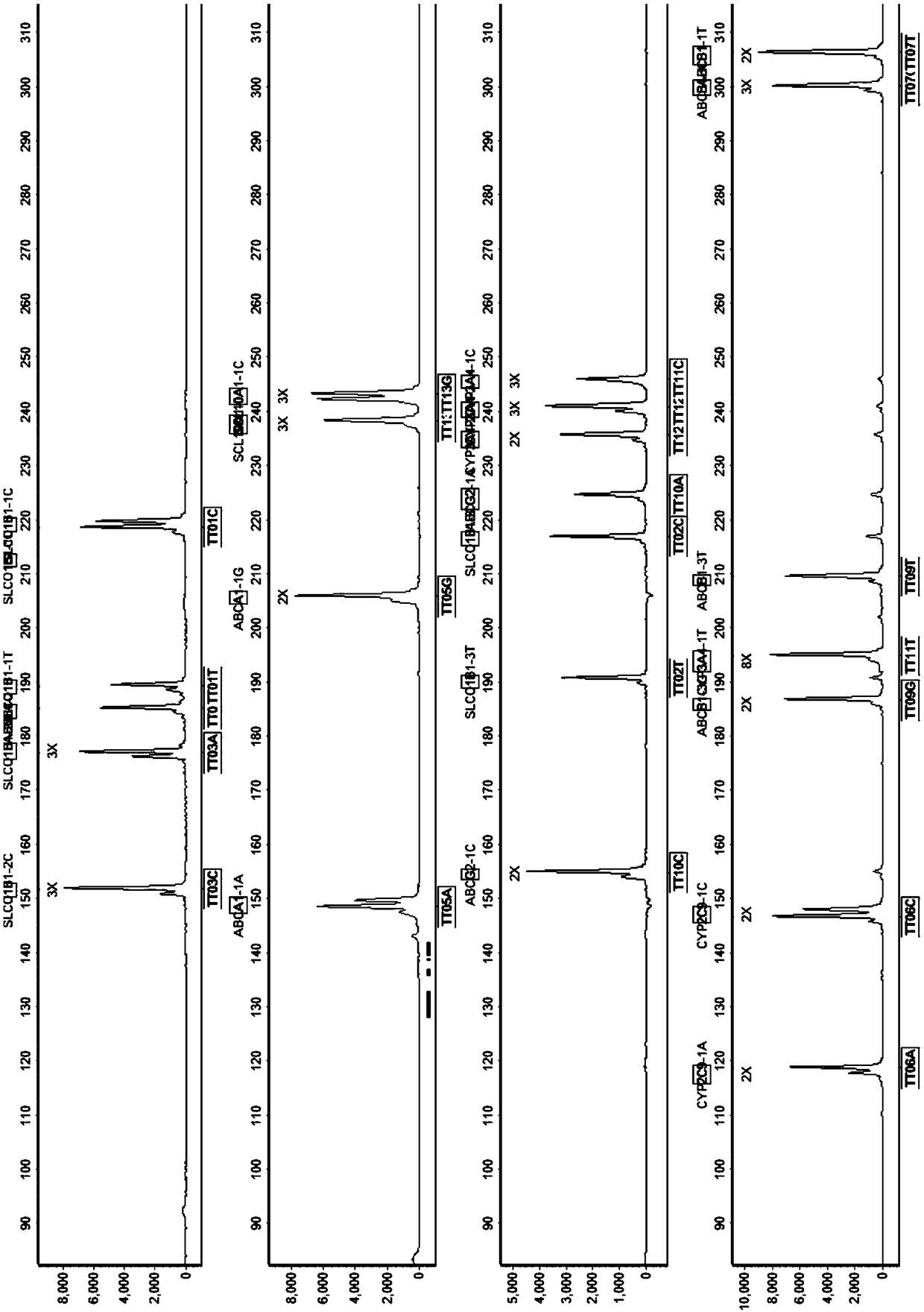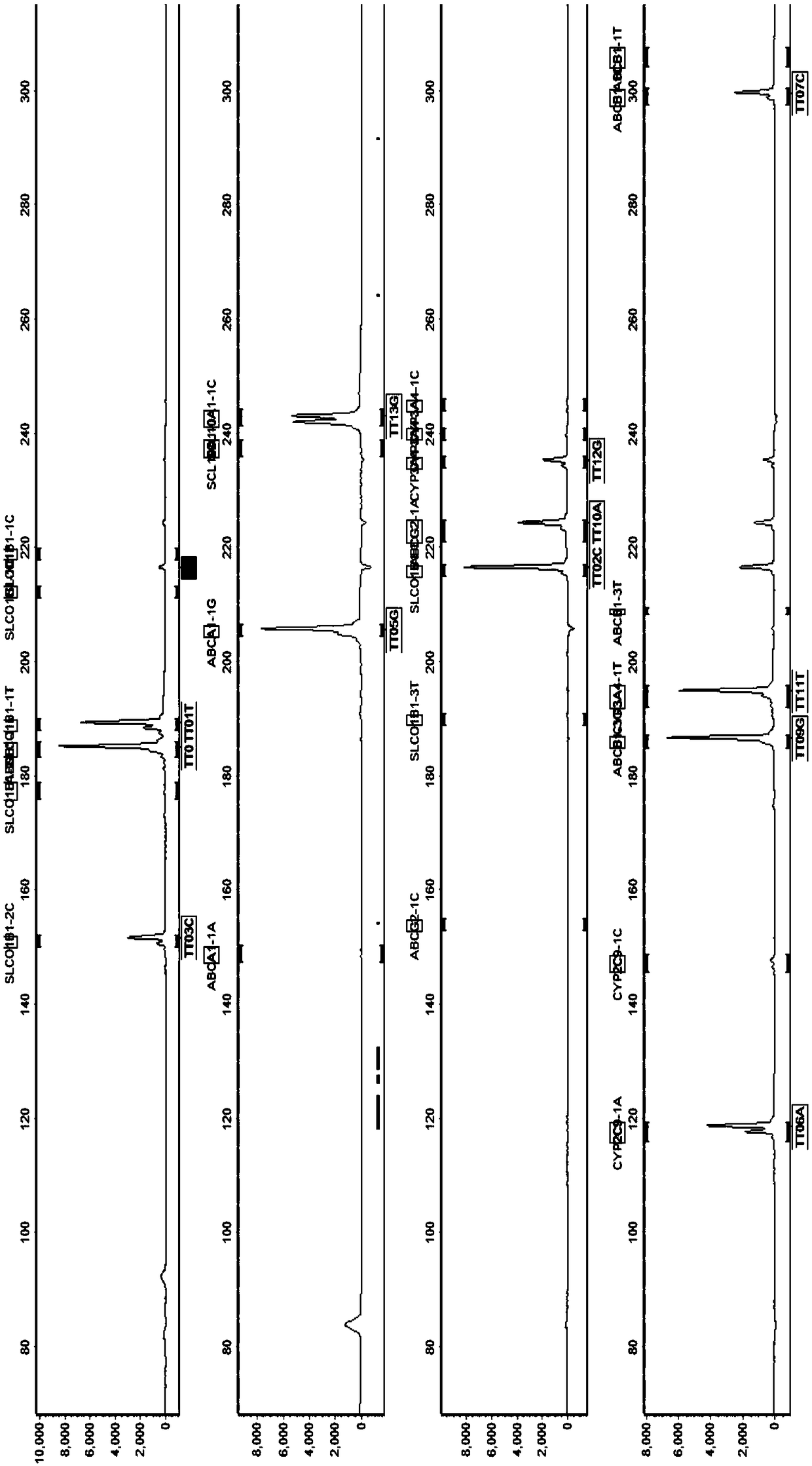Primer set, kit and method for detecting cardiovascular disease-related gene polymorphisms
A gene polymorphism and cardiovascular technology, which is applied in the field of reagent kits, biological molecular detection, and primer sets for detecting cardiovascular disease-related gene polymorphisms. It can solve the problems of high detection costs, high design costs, and lack of specificity. problems, to achieve high accuracy, low cost, and strong specificity
- Summary
- Abstract
- Description
- Claims
- Application Information
AI Technical Summary
Problems solved by technology
Method used
Image
Examples
Embodiment 1
[0092] Embodiment 1: the design of primer
[0093] Principles and considerations for primer design:
[0094] 1. Length: 15bp to 30bp, its effective length [Ln=2(G+C)+(A+T)] is generally not greater than 38, otherwise the optimum extension temperature of PCR will exceed the optimum action temperature of Taq enzyme, thus Reduce product specificity.
[0095] 2. G+C content: it should be between 40% and 60%. The annealing temperature in PCR amplification is generally the Tm value of the primer with a lower Tm value minus 5 to 10 degrees. When the primer length is less than 20, its Tm is always equal to 4×(G+C)+2×(A+T).
[0096] 3. The randomness of base distribution: more than 4 single bases in a row should be avoided. In particular, there should not be more than 3 consecutive Gs or Cs at the 3' end, otherwise the primers will be misprimed in the G+C-rich sequence region.
[0097] 4. The primer itself: it cannot contain a self-complementary sequence, otherwise a hairpin-like s...
Embodiment 2
[0102] Embodiment 2: Primer sequence screening detection
[0103] (1) Divide into 3 reaction tubes, Pool 1, Pool 2, and Pool 3, and add 10 ng of human genomic DNA (DNA sample of oral epithelial exfoliated cells) to each reaction tube.
[0104] (2) Using the DNA sample added in step (1) as a template, the PCR amplification primers (composed of SEQ ID NO: 1 to SEQ ID NO: 42) obtained in Example 1 were used for multiplex PCR amplification.
[0105] Wherein, the PCR amplification primers were combined in equal proportions (ie 1:1(v)) according to the method in Table 2, oscillated and mixed; and used after brief centrifugation.
[0106] Among them, the PCR amplification reaction system of each of Pool 1, Pool 2, and Pool 3 is: primer premix 10 μL, 2XPCR MIX 12.5 μL, template (positive quality control) 1 μL, ddH 2 Make up 25 μL of O, vortex and mix well, and perform multiple PCR amplification after brief centrifugation. The PCR reaction conditions include: stage 1: 95°C for 3 minut...
Embodiment 3
[0114] Embodiment 3: Primer sequence screening detection
[0115] The difference between this example and Example 2 is that the PCR amplification primers used in step (2) consist of SEQ ID NO:43 to SEQ ID NO:84. The detection result of this embodiment is as follows figure 2 shown.
[0116] From figure 1 and figure 2 The results obtained are shown in Table 4.
[0117] Table 4
[0118]
[0119] Depend on figure 1 and figure 2 As can be seen from Table 4, the primer sets detected in Examples 2 and 3 all obtained the typing information of all loci. Will figure 1 and figure 2 Comparing it can be seen that the peak height consistency between the sites of the primer set detected in Example 3 is better than that of the primer set detected in Example 2, so the primers consisting of SEQ ID NO:43 to SEQ ID NO:84 are recommended The set (set of primers shown in Table 1) is the preferred sequence information.
PUM
 Login to View More
Login to View More Abstract
Description
Claims
Application Information
 Login to View More
Login to View More - R&D
- Intellectual Property
- Life Sciences
- Materials
- Tech Scout
- Unparalleled Data Quality
- Higher Quality Content
- 60% Fewer Hallucinations
Browse by: Latest US Patents, China's latest patents, Technical Efficacy Thesaurus, Application Domain, Technology Topic, Popular Technical Reports.
© 2025 PatSnap. All rights reserved.Legal|Privacy policy|Modern Slavery Act Transparency Statement|Sitemap|About US| Contact US: help@patsnap.com



